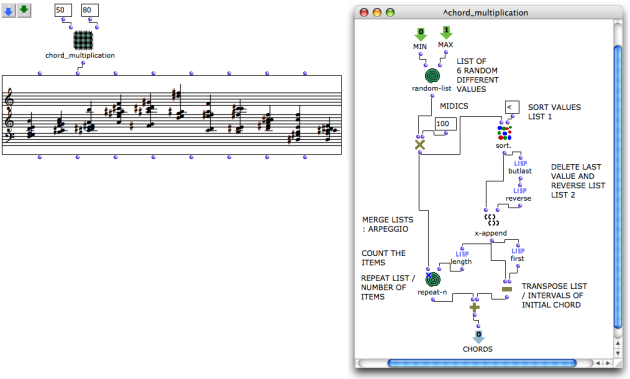| Navigation : Previous | Next |
Abstraction
A program or patch can be more or less complex, and comprise one or several components “layers”, like a tree structure. Such structures consist of patches embedded into other patches. Processes embedded in higher-level programs are called abstractions.
Abstraction aims at using a program as a function within another program.
- From a formal view, an abstraction results from the conversion of one or several elements of a program into variables .
- Consequently, in practical terms, an abstraction must have at least one outlet to communicate with the external environment.
Purposes
Abstractions allow to :
-
define and visualize the structure of a complex program,
-
bring modularity in a program,
-
control the development of a compositional architecture and processes, or considering it from another prospect,
-
gain space in a patch editor…
Example : Abstraction of a Process
Abstraction is a very convenient procedure - an abstracted program can be complex and “bulky”. Its representation as an object also shows what an abstraction actually is : a coherent and delineated function inside another program. This is the crucial, essential property of functional abstraction.
 A chord multiplication patch has been embedded as an abstraction inside a patch. The resulting chord sequence is visualised and integrated in a “higherlevel” processZoom
A chord multiplication patch has been embedded as an abstraction inside a patch. The resulting chord sequence is visualised and integrated in a “higherlevel” processZoom
Contents :
- OpenMusic Documentation
- OM User Manual
- OpenMusic QuickStart
| Navigation : Previous | Next |